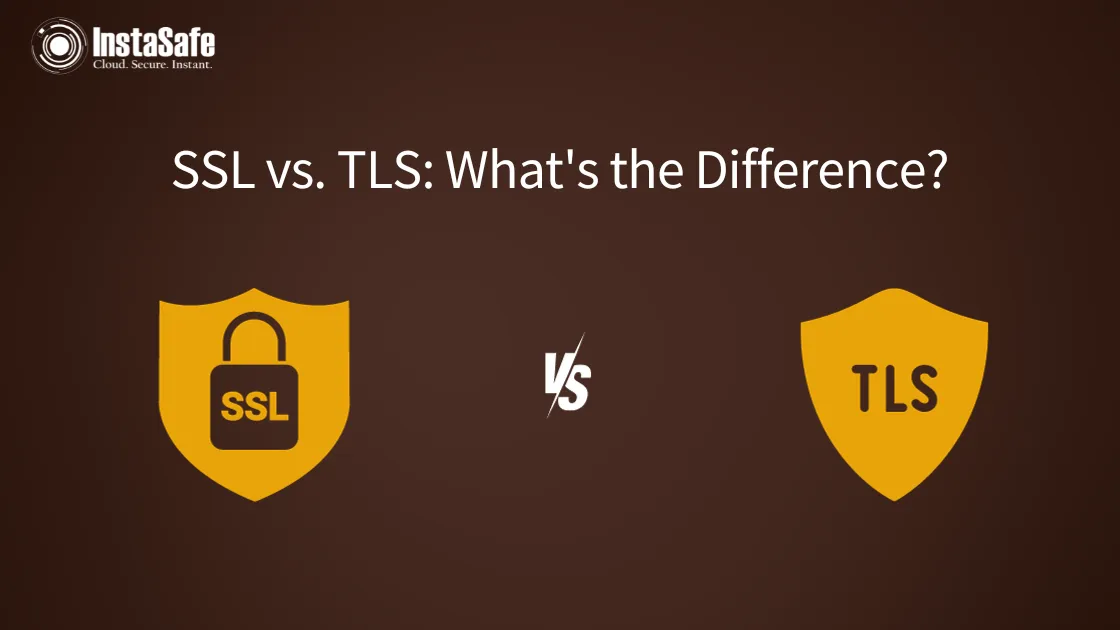SSL vs. TLS: What's the Difference?

SSL full form is Secure Socket Layer, and TLS means Transport Layer Security. These are the security protocols that have been used widely. The function of these security protocols is to offer a secure communication channel to transport data on the internet.
The first version of SSL was developed in 1995 by Netscape, but it wasn't released due to security vulnerabilities. However, unanimous participation and development over the SSL protocol gave birth to TLS. The first TLS protocol was released in 1990.
However, most people still don't understand the fundamental difference between SSL and TLS. So, in this blog, we will understand in detail about SSL and TLS.
What is SSL?
SSL is a security protocol with sets of rules that create a secure connection between applications and devices on the network. It is considered the foundation of developing secure connections over the internet. With an SSL protocol, businesses can securely transfer data between web servers and browsers.
The functioning of SSL involves encrypting the data, which is converting data into complex codes so that unauthorised parties can't decipher the information when it is transferred over the network.
What is TLS?
TLS is the most secure protocol or an updated version of SSL protocol. The primary goal of TLS is to offer security and data integrity between applications and devices on the network. However, TLS has some enhanced security features, like it can work on different ports and use robust hash algorithms.
A member of the IETF (Internet Engineering Task Force) made some variations in SSL 3.0 to introduce TLS 1.0 in 1999. TLS 1.2 and TLS 1.3 is considered to be the safest protocol.
SSL vs. TLS Comparison Table
Let's have a look at the comparison table of SSL and TLS.
Difference Between SSL and TLS
There is no doubt that the purpose of both security protocols is similar, but there are some critical differences between SSL and TLS.
- Handshake Process - The first difference between the SSL and TLS based on the handshake process. The handshake process is responsible for establishing secure connections between parties. So, both SSL and TLS have different handshake processes. In SSL, the process is divided into two parts, which are full handshake and abbreviated handshake, while the TLS only uses the full handshake process.
- Encryption Algorithms - Another differentiating factor in SSL and TLS is encryption algorithms. The purpose of these algorithms is to determine how to secure and encrypt data during the transmission. The SSL encryption algorithm is the cypher suite, which includes DES, AES, RC4 and more. However, the TLS protocol uses advanced and secure encryption algorithms such as ChaCha20, AES-CBC and more.
- Alert Message - The way both the security protocol handles and manages the alert message is another crucial point. Alert messages are communication messages such as warning and error messages during the disruption. In SSL, these messages are not encrypted, which means anyone can read them. On the other hand, TLS messages are encrypted, so only the parties involved can read the message.
- Message Authentication - Further, message authentication is another way to pinpoint SSL vs TLS. It is the process of analysing and verifying the data that has been transmitted. Both TLS and SSL have different message authentication protocols. The algorithm involved in TLS is SHA-256, while SSA uses the MD5 algorithm. Compared to TLS, the SSL algorithm is prone to collision attacks.
- Record Protocol - Lastly, record protocol is another factor distinguishing between SSL and TLS. It is the protocol responsible for encapsulating the data that needs to be transferred or exchanged. TLS and SSL have different record protocols. The protocol used by TLS is a standard record protocol developed by IETF. At the same time, SSL used a proprietary protocol developed by Netscape.
Need for SSL/TLS Certificate For Business
Having an SSL and TLS certificate makes sure that the information exchange between client and business is secure and safe. This helps in building trust between the customers. Further, if the customer trusts the business, he will return for service and become a loyal customer.
An SSL/TLS certificate also helps businesses avoid legal penalties and fines. A website is open to threats if adequate security measures are not in place. Legal action may be taken against the organisation if a data breach or theft occurs due to one of these assaults.
However, when a website uses an SSL or TLS certificate, it ensures that the connection between the user's browser and the website is encrypted, which means the information passed or exchanged over the internet is secure from prying eyes.
How to Identify If a Website Has a Certificate?
The Hypertext Transfer Protocol (HTTP) is the standard for exchanging information across the World Wide Web. If the website is secure and has an SSL/TLS certificate, it will use the Hypertext Transfer Protocol Secure (HTTPS) for exchanging information.
The S in HTTPS stands for secure, showing that the data is encrypted. HTTP, on the other hand, is more susceptible to attacks like unauthorised access and eavesdropping because it is not encrypted.
Replace SSL Certificates with TLS Certificates
TLS certificates are the industry standard for securing web traffic, and they offer not only security benefits but also performance improvements.
Web browsers like Google Chrome have dropped support for SSL 2.0, SSL 3.0, TLS 1.0, and TLS 1.1 due to their known vulnerabilities. As a result, businesses should use up-to-date TLS certificates to ensure compatibility with modern browsers and maintain the highest level of security.
Zero Trust Model With TLS
Zero Trust and TLS can work together to enhance network security. Even if a network follows Zero Trust principles, secure communication is essential. TLS can encrypt data in transit and verify the identity of communication partners.
Whenever a device or user requests access to data or resources in a Zero Trust environment, using TLS can ensure that the communication remains secure, regardless of whether it's within the same network or across different networks.
This combination of Zero Trust policies and TLS encryption can help organisations protect their sensitive data and maintain a higher level of security.
Conclusion
SSL and TLS are security protocols that perform data encryption tasks. SSL is the traditionally used protocol, while TLS is the protocol with enhanced security.
By employing the InstaSafe Zero Trust solution with TLS, organisations can create a robust security posture that protects against external and internal threats, secures data in transit and at rest, and provides a comprehensive framework for securing their networks and resources.
Frequently Asked Questions
- Why is TLS better than SSL?
TLS has evolved to support stronger encryption algorithms compared to older SSL versions.
2. Why do we use TLS?
TLS encrypts data in transit, ensuring that the information exchanged between a client and a server remains confidential and cannot be easily intercepted or deciphered by unauthorised parties.
3. Is the SSL certificate deprecated?
SSL is deprecated, and TLS 1.2 and 1.3 are now in use.
Key Products
Multi Factor Authentication | Identity And Access Management | ZTNA | Zero Trust Application Access | Secure Enterprise Browser
Key Features
Single Sign On | Endpoint Security | Device Binding | Domain Joining | Always On VPN | Contextual Access | Clientless Remote Access | Device Posture Check
Key Solutions
VPN Alternatives | DevOps Security | Cloud Application Security | Secure Remote Access | VoIP Security
